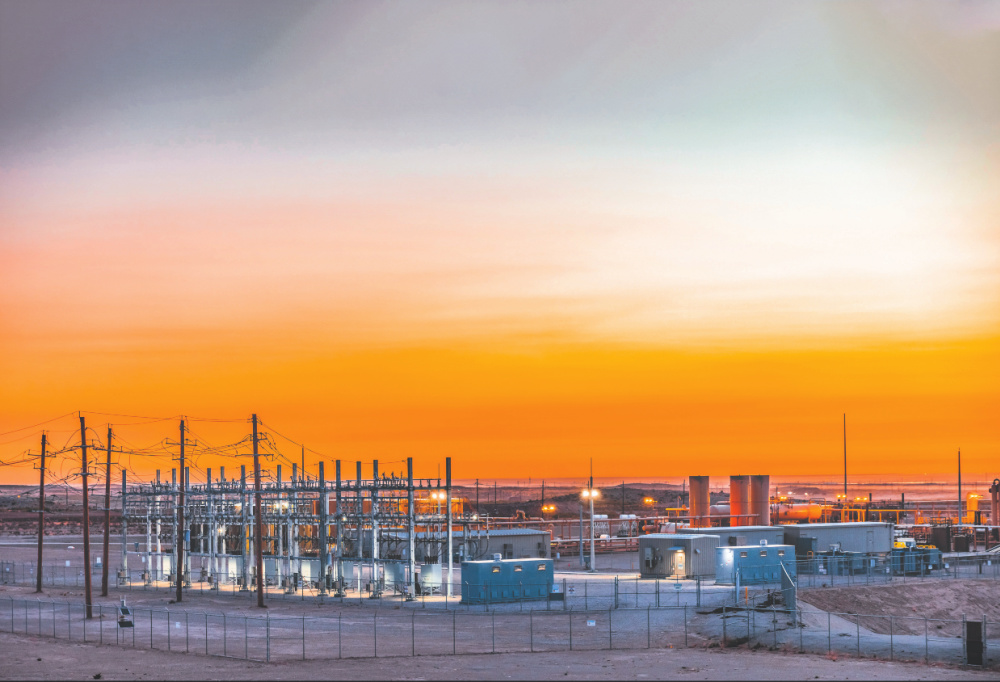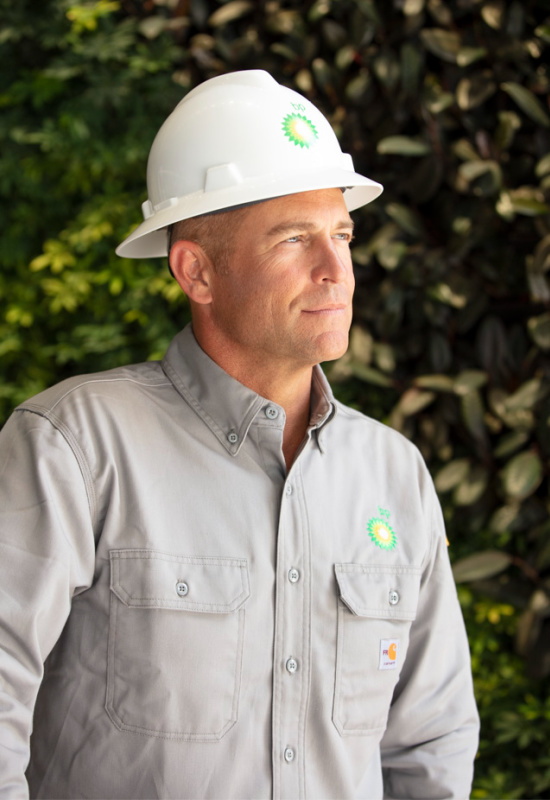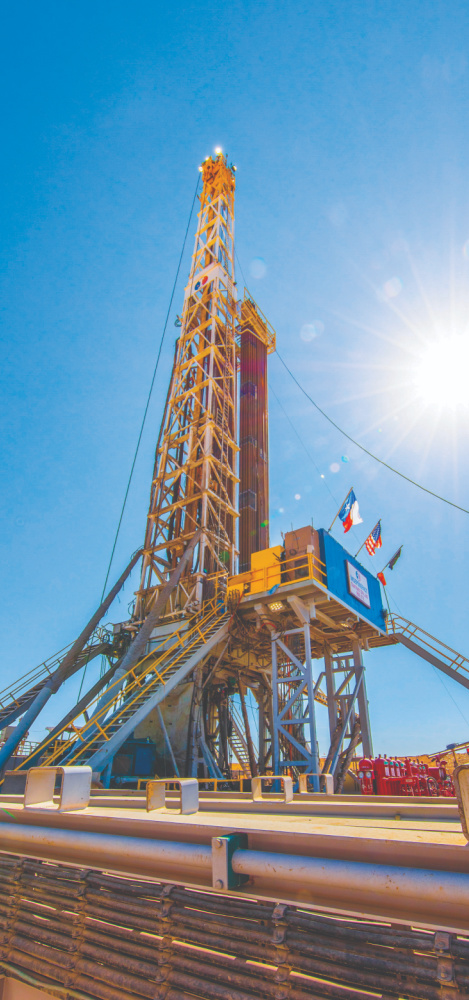Presented by:
BP Plc came around to putting together a sizeable U.S. shale portfolio later than other operators. But it wasn’t late in terms of the price paid in 2018, and the value the properties are returning. It gained 190,000 boe/d (45% liquids) from BHP Group Ltd., gaining 470,000 net acres in the Haynesville, Eagle Ford and Delaware Basin for $10.5 billion—the largest BP acquisition in more than 20 years.
The Delaware portion was 83,000 net with some 3,400 gross drilling locations and existing production of some 40,000 boe/d (70% liquids). In the Eagle Ford, it picked up 194,000 acres and 1,400 locations in the oil and wet gas windows, producing 90,000 boe/d (70% liquids).
In the Haynesville, it added 194,000 acres with 720 locations, more than tripling its preexisting position in the play and producing 60,000 boe/d (100% gas). BP had put its onshore U.S. upstream business into a new unit, BPX Energy, in 2014, consisting of some 315,000 boe/d from seven basins in five states that it eventually divested and named Dave Lawler the new unit’s CEO.
Lawler, who is now also chairman and president of BP America Inc., began his career in 1990, joining Conoco and Burlington Resources and then Shell E&P Co. He was president and CEO of independent PostRock Energy Corp. before joining SandRidge Energy Inc. as COO.
Among the BPX Energy attributes he’s proud of is the company’s culture. Printed on the coffee cups in the community cafe at Denver headquarters is the slogan, “You belong here.”
“It’s my hope that society views BP in this same way— that BP belongs—because we are fully committed to helping the world achieve net zero. It’s a massive challenge, but our teams are in action, and we are sincere about playing a meaningful role in the energy transition.”
Executive editor-at-large Nissa Darbonne visited with Lawler in May.
Nissa Darbonne: It’s been four years since the acquisition. How’s it going?
Dave Lawler: Our goal was to create a business model that could deliver material free cash flow on a consistent basis and compete for capital across the globe. With the premium BHP assets, we secured a multidecade development position in some of the highest performing reservoirs within the Haynesville, Eagle Ford and Permian. When combined with our exceptional team, all our objectives have been achieved. In 2021, we exceeded $1 billion of free cash flow and simultaneously improved our safety and environmental performance.
ND: The $1 billion in free cash in 2021. That was from BPX in particular?
DL: Yes. That was just BPX.
In 2021, the aggregate IRR of our capital program exceeded 100%.
ND: As both oil and gas prices have improved dramatically this year, what might the 2022 results be?
DL: In the first quarter, [parent BP] delivered about $8.2 billion in operating cash flow. BPX was an important part of that.
We spent about $1 billion in capex last year. This year we’ll spend about $1.5 billion to $1.7 billion. So we anticipate free cash flow will again be significant because the teams are delivering some outstanding wells.
ND: You’re getting these results from just three properties.
DL: Yes. I don’t think our valuation reflects that these are core positions in world-class basins. For example, we’re in Reeves County [in the Delaware Basin] with probably the strongest production and richest hydrocarbon saturation in the Permian, or at least one of the very top areas.
The same is true of our position in the Eagle Ford. And then we have what we think is some of the very best rock in the Haynesville.

ND: I hear you’re making enormous step-outs in the Eagle Ford.
DL: Last year, the team drilled and completed a step-out that is on track to an EUR more than three times as large as already-strong offsets and is expected to deliver a 5.2 value investment ratio (VIR = net present value/well cost), which is one of the primary metrics we utilize to deploy capital across the business. That’s just a world-class economic outcome. We’re still discovering zones and areas that we hadn’t even priced in the original deal.
ND: Where is it? In the gas fairway?
DL: We weren’t going to disclose that for now. But our acreage straddles the dry-gas and liquids windows, so we have optionality within the trend itself. There’s a spectrum of opportunities within the whole Eagle Ford trend.
ND: Are you looking to buy?
DL: We are pleased with our current position and have no plans to pursue a material acquisition. We are always open to strategic additions that fit well with our current operations.
ND: Natgas strip was $2.84 when the deal with BHP closed. Today, it’s more than $7. It seems there was only one place for BPX’s returns to go: up. So the deal had upside no matter what, right?
DL: The price of gas certainly was an upside, but we didn’t count on that to support the deal. We did have the strong liquids component, which was a key focus for future development. In addition, there were numerous undeveloped areas and zones and key synergies that we knew provided significant upside.
Naturally, the improvement in prices have helped. But even at deal metrics, the wells in the Haynesville are best-in-class. We brought on a two-well pad last year that was getting close to pushing 50 MMcf/d total. And we have a massive inventory.

“If you invest correctly, you will get a strong rate of return and by doing it right. So, we’re delivering exceptional wells, generating a significant amount of cash for the company, and, at the same time, decarbonizing. So, it can be done.”—David C. Lawler, CEO, BPX Energy
But we’re also really optimizing our completions, getting the longest laterals possible and optimizing the stages and the sand and fluid pumped. We have dynamic analytics that are working well for us.
We’re pleased with the results that have come in—and at any price environment. I want to make sure this is appreciated. Some might say, “Well, you had a strong year in terms of prices.” Without a doubt, that’s true. But even at moderate-to-lower prices, these assets are very strong.
ND: In the spring of 2021, before the situation in Europe this year, I saw natgas futures elevate across the board, even diminishing the shoulder-versus-winter difference and possibly because 20 Bcf/d is being exported now. Do you think that at least a $4 or $5 strip going forward is likely?
DL: I won’t speculate on prices. But if you look at the investment profile over the last few years, you’ll see a significant reduction in capex deployed on gas development. This decline, combined with demand for gas supporting the energy transition, creates an environment for gas that is different than in previous cycles.
Gas is important to society. When combined with emissions reduction technologies, carbon capture and storage, and for potential use in hydrogen, we have a reason to be excited about our gas position in the Haynesville. We have somewhere on the order of 11 Tcf of total resource. So gas is very important to our portfolio going forward.
ND: Tell us about your work in the energy transition.
DL: BPX, in addition to delivering free cash flow to BP Plc, is going to be very integrated in the energy transition. We have the subsurface expertise and the drilling expertise that will play a leading role in the carbon-capture aspect of the business. We will drill several appraisal wells for the company in 2022.
We’re also going through a process of independently certifying our gas as low-methane intensity.
ND: Your career began in 1990. Could you have imagined then that 2- and 3-mile, multi-frac-stage laterals in tight rock onshore the U.S. and the U.S. becoming the world’s No. 1 oil and gas producer again is where we would be today?
DL: I actually started my drilling career working for Rick Muncrief, now the CEO of Devon [Energy Corp.], at Burlington Resources. We were drilling single-mile horizontal wells, intersecting fractures in the Bakken [in the early 1990s] well before today’s frac technology. Rick is an exceptional leader and a dear friend to this day.
When I got out of the [Colorado] School of Mines in 1990, it was still a conventional oil and gas business, evolving into deep water. Then the industry evolved into unconventional development, unlocking significant production and reserves. And now the energy transition, where gas will be a source of blue hydrogen transportation fuel.
It’s been an exciting career to see all these different phases. But I can tell you this latest one is the most exciting.

ND: The energy transition?
DL: Yes. BP aims to spend $4 billion to $6 billion per year on low-carbon projects by 2030. There’s just so much going on in the space, and it’s work that matters to society. We listen hard, [and] it is clear what is being asked of us globally: People want clean, reliable and affordable energy. BP was and remains at the forefront of responding to that request.
We’ll still be in the oil and gas business, but, globally, production will be 40% lower by the end of the decade as we high-grade the business. However, BPX and the Gulf of Mexico production will probably be growing over that period. In fact, we’ll play a very important role in funding the transition and producing what we call “resilient hydrocarbons.”
But if you told me in 1990 that I would have the opportunity to work with all the amazing people and take on all these generational challenges, it would have been hard to process all that change. It’s exciting to be a part of and to continue to grow into new areas.
ND: One of BP’s clean energy projects is solar in Pueblo, Colo.
DL: We’re a 50:50 partner. It powers an electric arc furnace in a steel mill that recycles steel. This is a clear example of a circular green economy.
It’s amazing that a steel mill that had been in operation since the late 1800s has found a way to evolve so it can remain an important part of the community and the economy in Pueblo.
ND: What else should Oil and Gas Investor’s readers know about BPX?
DL: We’re proud that we’ve reduced flaring from roughly 16% when we acquired our assets to less than 0.5% today, all while bringing new production online. And we are in the process of electrifying the field. At our new well sites, there are no tanks, no flares. It’s just power lines. And it’s nearly silent.
We plan to spend about $1.3 billion total to install a state-of-the-art gathering system in the Permian Basin. This all-electric strategy is well underway in Reeves County. We’ve installed 2,200-megawatt substations that power most of our field. We currently utilize about 23 MW, for which we purchase renewable energy credits.
We also expect to achieve zero routine flaring well ahead of our target of 2025.
If you invest correctly, you will get a strong rate of return and by doing it right. So, we’re delivering exceptional wells, generating a significant amount of cash for the company, and, at the same time, decarbonizing. So, it can be done.
My hope and message is that we can perform while we transform for the future, decarbonizing oil and gas production, all while investing in and developing technologies that will help the world reach net zero.
I’m very excited about the future.
Recommended Reading
BP Restructures, Reduces Executive Team to 10
2024-04-18 - BP said the organizational changes will reduce duplication and reporting line complexity.
Matador Resources Announces Quarterly Cash Dividend
2024-04-18 - Matador Resources’ dividend is payable on June 7 to shareholders of record by May 17.
EQT Declares Quarterly Dividend
2024-04-18 - EQT Corp.’s dividend is payable June 1 to shareholders of record by May 8.
Daniel Berenbaum Joins Bloom Energy as CFO
2024-04-17 - Berenbaum succeeds CFO Greg Cameron, who is staying with Bloom until mid-May to facilitate the transition.
Equinor Releases Overview of Share Buyback Program
2024-04-17 - Equinor said the maximum shares to be repurchased is 16.8 million, of which up to 7.4 million shares can be acquired until May 15 and up to 9.4 million shares until Jan. 15, 2025 — the program’s end date.







